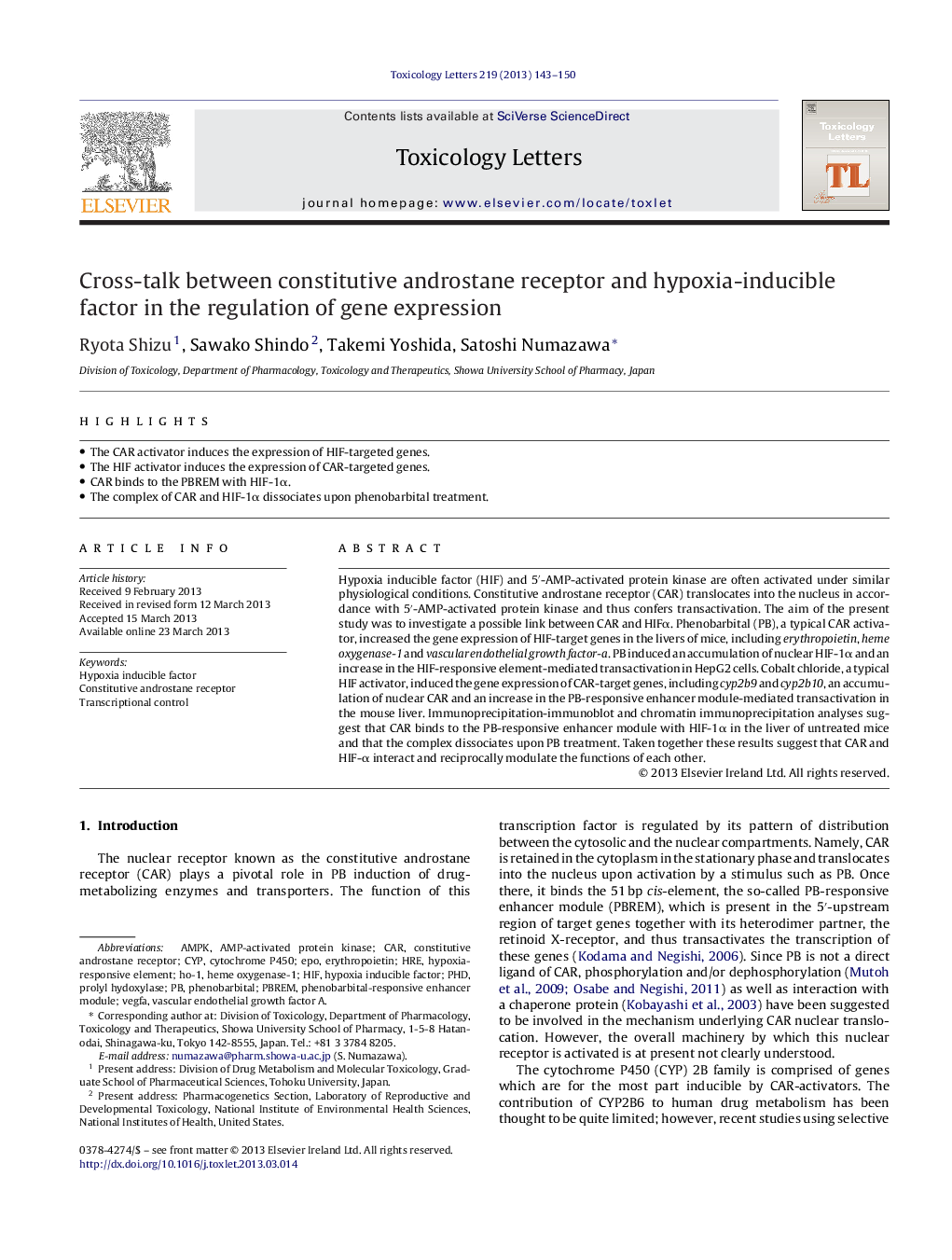| Article ID | Journal | Published Year | Pages | File Type |
|---|---|---|---|---|
| 2599198 | Toxicology Letters | 2013 | 8 Pages |
•The CAR activator induces the expression of HIF-targeted genes.•The HIF activator induces the expression of CAR-targeted genes.•CAR binds to the PBREM with HIF-1α.•The complex of CAR and HIF-1α dissociates upon phenobarbital treatment.
Hypoxia inducible factor (HIF) and 5′-AMP-activated protein kinase are often activated under similar physiological conditions. Constitutive androstane receptor (CAR) translocates into the nucleus in accordance with 5′-AMP-activated protein kinase and thus confers transactivation. The aim of the present study was to investigate a possible link between CAR and HIFα. Phenobarbital (PB), a typical CAR activator, increased the gene expression of HIF-target genes in the livers of mice, including erythropoietin, heme oxygenase-1 and vascular endothelial growth factor-a. PB induced an accumulation of nuclear HIF-1α and an increase in the HIF-responsive element-mediated transactivation in HepG2 cells. Cobalt chloride, a typical HIF activator, induced the gene expression of CAR-target genes, including cyp2b9 and cyp2b10, an accumulation of nuclear CAR and an increase in the PB-responsive enhancer module-mediated transactivation in the mouse liver. Immunoprecipitation-immunoblot and chromatin immunoprecipitation analyses suggest that CAR binds to the PB-responsive enhancer module with HIF-1α in the liver of untreated mice and that the complex dissociates upon PB treatment. Taken together these results suggest that CAR and HIF-α interact and reciprocally modulate the functions of each other.
